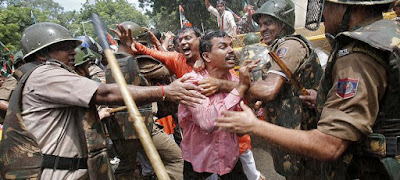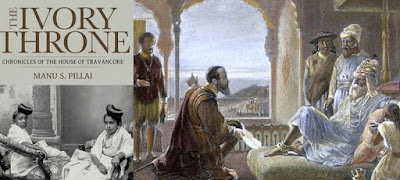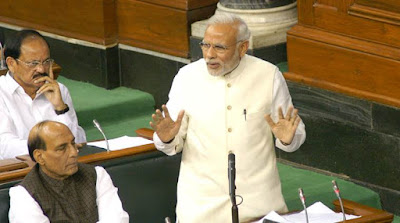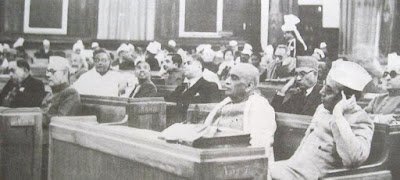The ministry has ordered a probe to find
out why its data on communal incidents vary from those of its subsidiary, the
National Crime Records Bureau.
Both data sets list about the same number of victims: the MHA 2,016; the NCRB, 2,001. There are other points of commonality.
What the home ministry and NCRB agree: 13 states reported no riots
Home Ministry and NCRB data match only for 13 states/UTs, and these are states where both NCRB and MHA report no riots.
There is a double-digit difference in 11 states, and the difference is significant in 10 states. The MHA reported only 10 riots for Jharkhand, while the NCRB reported 349.
How the NCRB changed its method of data collection
The NCRB maintains a secure national database of crimes, criminals and law enforcement agencies, collecting data from state police departments, compiling it into an annual Crime in India report.
The NCRB made significant changes to collection and dissemination of crime data in 2014.
In its new template for collection of crime data, there is a section on riots as defined under Sections 147, 148, 149, 150 and 151 of the Indian Penal Code.
There is a separate section for data on offences that promote enmity between different groups, as defined under Sections 153A and 153B of the IPC.
India
experienced 644 communal riots in 2014, according to data released by the Home
Ministry. But if you believe data released by the National Crime Records Bureau
– a Home Ministry subsidiary – there were 1,227 riots that year.
The data discrepancy, reported by Factly.in, a data journalism portal, is important because as an intolerance debate roils India, much attention is being focused on whether such riots have increased or decreased since Narendra Modi took over as prime minister in May 2014.
The Home Ministry has now ordered a probe to find out why its data on communal riots vary from those of the NCRB, which it controls.
IndiaSpend previously reported how Karnataka, Madhya Pradesh and Uttar Pradesh are India’s communal tinderboxes, according to data tabled in the Lok Sabha.
Is the way hate speeches are listed the cause of the data dispute?
The NCRB numbers could be high only because hate speeches qualify as “incidents” and are listed under riots in NCRB data, while they might not be counted as incidents by the human rights division of the MHA.
Even so, the NCRB numbers should be higher in every state.
The only plausible reason for the discrepancy is faulty reporting by state police and intelligence departments, calling into question the sanctity of government data.
The biggest difference in data is in Uttar Pradesh
India had 1,227 communal riots in 2014, with 2,000 people listed as victims, according to the NCRB data.
Leading the list is Jharkhand with 349 incidents, followed by Haryana with 207. Tamil Nadu is third with 120 incidents followed by West Bengal (104), Maharashtra (99), Bihar (59) and Gujarat (57).
Jharkhand, Haryana, Tamil Nadu and West Bengal do not have significantly more riots, according to the MHA data.
Indeed, there are less than 20 riots in each of those states, as per the MHA data. Uttar Pradesh, which had the highest number of riots (133), as per the MHA, is eighth in the NCRB list with 51 communal riots.
The data disagreement extends to Haryana, Tamil Nadu, West Bengal, Telangana, Gujarat, Madhya Pradesh, Karnataka, Rajasthan and Uttar Pradesh.
The data discrepancy, reported by Factly.in, a data journalism portal, is important because as an intolerance debate roils India, much attention is being focused on whether such riots have increased or decreased since Narendra Modi took over as prime minister in May 2014.
The Home Ministry has now ordered a probe to find out why its data on communal riots vary from those of the NCRB, which it controls.
IndiaSpend previously reported how Karnataka, Madhya Pradesh and Uttar Pradesh are India’s communal tinderboxes, according to data tabled in the Lok Sabha.
Is the way hate speeches are listed the cause of the data dispute?
The NCRB numbers could be high only because hate speeches qualify as “incidents” and are listed under riots in NCRB data, while they might not be counted as incidents by the human rights division of the MHA.
Even so, the NCRB numbers should be higher in every state.
The only plausible reason for the discrepancy is faulty reporting by state police and intelligence departments, calling into question the sanctity of government data.
The biggest difference in data is in Uttar Pradesh
India had 1,227 communal riots in 2014, with 2,000 people listed as victims, according to the NCRB data.
Leading the list is Jharkhand with 349 incidents, followed by Haryana with 207. Tamil Nadu is third with 120 incidents followed by West Bengal (104), Maharashtra (99), Bihar (59) and Gujarat (57).
Jharkhand, Haryana, Tamil Nadu and West Bengal do not have significantly more riots, according to the MHA data.
Indeed, there are less than 20 riots in each of those states, as per the MHA data. Uttar Pradesh, which had the highest number of riots (133), as per the MHA, is eighth in the NCRB list with 51 communal riots.
The data disagreement extends to Haryana, Tamil Nadu, West Bengal, Telangana, Gujarat, Madhya Pradesh, Karnataka, Rajasthan and Uttar Pradesh.
Source: National Crime Records Bureau
Both data sets list about the same number of victims: the MHA 2,016; the NCRB, 2,001. There are other points of commonality.
What the home ministry and NCRB agree: 13 states reported no riots
Home Ministry and NCRB data match only for 13 states/UTs, and these are states where both NCRB and MHA report no riots.
There is a double-digit difference in 11 states, and the difference is significant in 10 states. The MHA reported only 10 riots for Jharkhand, while the NCRB reported 349.
Source: National
Crime Records Bureau and Ministry of Home
Affairs data.
How the NCRB changed its method of data collection
The NCRB maintains a secure national database of crimes, criminals and law enforcement agencies, collecting data from state police departments, compiling it into an annual Crime in India report.
The NCRB made significant changes to collection and dissemination of crime data in 2014.
In its new template for collection of crime data, there is a section on riots as defined under Sections 147, 148, 149, 150 and 151 of the Indian Penal Code.
There is a separate section for data on offences that promote enmity between different groups, as defined under Sections 153A and 153B of the IPC.
Before 2014, all the data related to riots were collected under one head called
riots. From 2014, the data on riots is categorised into many different
sub-heads, namely communal riots, industrial riots and riots for political
reasons etc.
The data collected under Sections 153A and 153B is counted as communal riots.
The NCRB gets data from state police departments. These data are based on the sections of law mentioned in the first information report.
The NCRB also follows what is called the ‘Principal Offence Rule’ for counting crime. So, among many offences registered in a single case, only the most heinous crime will be considered as a counting unit, thereby representing one case.
This article was originally published on IndiaSpend, a data-driven and public-interest journalism non-profit.
The data collected under Sections 153A and 153B is counted as communal riots.
The NCRB gets data from state police departments. These data are based on the sections of law mentioned in the first information report.
The NCRB also follows what is called the ‘Principal Offence Rule’ for counting crime. So, among many offences registered in a single case, only the most heinous crime will be considered as a counting unit, thereby representing one case.
This article was originally published on IndiaSpend, a data-driven and public-interest journalism non-profit.
We
welcome your comments at letters@scroll.in
Source: scrollin









